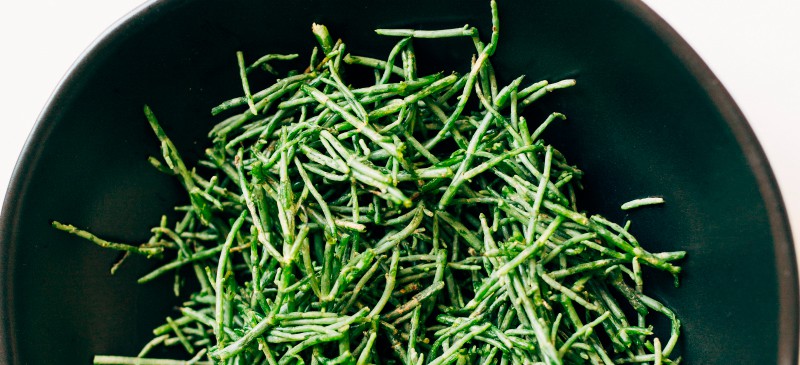This Dr. Axe content is medically reviewed or fact checked to ensure factually accurate information.
With strict editorial sourcing guidelines, we only link to academic research institutions, reputable media sites and, when research is available, medically peer-reviewed studies. Note that the numbers in parentheses (1, 2, etc.) are clickable links to these studies.
The information in our articles is NOT intended to replace a one-on-one relationship with a qualified health care professional and is not intended as medical advice.
This article is based on scientific evidence, written by experts and fact checked by our trained editorial staff. Note that the numbers in parentheses (1, 2, etc.) are clickable links to medically peer-reviewed studies.
Our team includes licensed nutritionists and dietitians, certified health education specialists, as well as certified strength and conditioning specialists, personal trainers and corrective exercise specialists. Our team aims to be not only thorough with its research, but also objective and unbiased.
The information in our articles is NOT intended to replace a one-on-one relationship with a qualified health care professional and is not intended as medical advice.
What Is Samphire? Surprising Benefits and How to Cook It
January 3, 2022

Samphire, also known as sea beans or sea asparagus, is a somewhat uncommon vegetable that you’ll find served along with fish, lamb or pasta. Because this veggie grows near the sea, it absorbs minerals from the ground that you can then benefit from when you eat samphire.
This makes it similar to other salty sea vegetables, such as edible seaweeds.
If you’re able to find it in grocery stores near you, you can try boiling, steaming or flash frying it to tone down its intense flavor. Because of its vitamin C, antioxidant and mineral content, it makes a good addition to an anti-inflammatory diet that may help protect against issues such as heart disease.
What Is Samphire?
Samphire is a group of edible succulents that grow near saltwater, such as on beaches and in marshes. Technically these plants are succulent halophytes, meaning that they grow in saltwater or salty soil.
They are members of the plant family called Amaranthaceae. The most common type, called marsh samphire, is found in places such as the United Kingdom (especially Norfolk) and the coasts of the U.S.
Samphire was named after “Saint Pierre” (or St. Peter), who was the patron saint of fishermen.
What does samphire taste like? It’s said to be salty, vibrant and somewhat strong-tasting, capable of adding a “fresh burst” to recipes, especially those high in fat, such as dark meat and some types of fish.
Is samphire the same as sea asparagus? Yes, samphire goes by several other names in different parts of the world, including:
- sea asparagus
- glasswort
- sea beans
- baby asparagus
- salicornia
It looks like tiny asparagus, but it’s not the same species as the asparagus plant.
Types/Varieties
Although there are many samphire species in existence, there are two types that are eaten: marsh samphire, the more common type, and the more difficult-to-harvest type, called rock samphire.
Marsh samphire:
- This is the type that resembles tiny shoots of asparagus. It looks like small, green, segmented twigs and has a similar texture to asparagus.
- Its species name is Salicornia herbacea L., which it’s sometimes labeled as in certain grocery stores (or simply salicornia).
- Its taste is “fresh and salty,” much like seaweed. The main difference is that it lacks the fishy smell and taste that seaweed tends to have.
- It’a found growing along the Pacific and Atlantic Coasts in the U.S. and in Europe.
Rock samphire:
- This type is much less commonly found in stores because it’s very hard to gather. It’s found on high coastal cliffs in Great Britain and northwestern Europe, making it dangerous to forage for.
- Its species name is Crithmum maritimum.
- Compared to other varieties, it has a more intense, spicy flavor.
- It’s also different than the marsh variety because its twigs are not segmented, and it has a darker green color.
Nutrition
Why is samphire good for your health? It’s a good source of nutrients, including:
- vitamin C
- calcium
- magnesium
- manganese
- iodine
- iron
- fiber
- silica
Additionally, it contains unique antioxidants and anti-inflammatory compounds — such as glucopyranosides and fucoidans, which are also found in other sea vegetables, such as algae and seaweeds. Studies show it also contains flavonoids, tannins and polyphenols such as tungtungmadic acid, quercetin, and chlorogenic acid.
Samphire also contains high amounts of sodium carbonate, also called soda ash, which allows it to be used to make glass and soap. (This has been practice since as far back as the 14th century in Norfolk in the U.K.)
Benefits
1. Provides Protective Antioxidants
Samphire contains antioxidants that help counteract free radical damage and oxidative stress, which can contribute to a number of diseases.
According to a 2016 review, “Medicinal attributes like immunomodulatory, lipid-lowering, antiproliferative, osteoprotective, and hypoglycemic render this lesser-known marsh plant significant for phytochemical studies.”
Studies show that it’s high in fucoidans and fucoidanases, types of polysaccharides that contain l-fucose and sulfate ester groups that have a number of biological effects.
Research has demonstrated that fucoidans have not only antioxidant effects, but also immunomodulatory, anti-inflammatory, blood lipid-reducing and antiviral properties. These compounds are thought to help protect against tumor and cancer development, liver damage, gastric problems, infections, high cholesterol, and more.
2. Supports the Immune System
Like many other sea vegetables, samphire is high in vitamin C, a nutrient that has antioxidant effects and supports immune function. Vitamin C can help defend against certain illnesses by stimulating the body’s production of white blood cells.
Other compounds found within samphire have also been shown to suppress the expression of cytokines that can increase inflammation —such as nitric oxide synthase, tumor necrosis factor-alpha and interleukin-1beta.
3. Aids in Digestive/Gut Health
A traditional use of samphire is consuming it for its diuretic and detoxification properties. It may help aid in forming stools, regulating bowel movements and preventing constipation.
It’s also thought to protect the liver against damage.
Additionally, the fiber found in samphire can help support gut health by feeding healthy probiotic bacteria. Fiber also helps to make you feel full, which can regulate your appetite and potentially help you control our calorie intake.
4. Promotes Metabolic and Cardiovascular Health
Samphire has not only anti-inflammatory compounds that protect the heart and arteries, but also several minerals that are beneficial for regulating blood pressure, such as magnesium and potassium.
Although it’s high in sodium, one study found that samphire did not contribute to hypertension or vascular dysfunction. Researchers believe that its anti-inflammatory compounds, such as ferulic acid, might be at least partly responsible for the vasoprotective effects of samphire, and it may even help prevent high blood pressure.
A separate animal study showed that samphire supplementation could serve as a “natural anti-obesity agent” and could potentially improve metabolic health in multiple ways. When given to rats fed a high-fat diet, it was shown to significantly decrease body weight gain, liver weight, hepatic triglyceride, serum leptin and insulin levels.
Additionally, samphire is high in calcium, which helps protect arteries from damage. Another benefit of consuming calcium is that it aids in bone density and can help keep bones strong as someone ages.
5. May Have Neuroprotective Effects
Extracts made from samphire have been found to be rich in antioxidant compounds that have neuroprotective activities and the ability to protect against glutamate-induced brain cell death.
Samphire seems to protect the brain by scavenging reactive oxygen species and increasing antioxidant status, which prevents neural damage.
6. Supports Thyroid Function
As a good source of iodine, samphire can help support thyroid function, since the thyroid requires iodine to create essential hormones.
How to Eat (Recipes, Uses)
Samphire is freshest and in season in the late summer, usually during July and August in the Northern Hemisphere. It’s important that you eat it while it’s still fresh, because otherwise it tends to change flavors and become unpleasant-tasting.
Samphire can be eaten raw such in salads, or cooked. Because it tends to be very salty, most people prefer to cook it to improve its taste.
Most often it’s briefly boiled or steamed for a few minutes.
How is it normally used in recipes? Some popular ways to cook and enjoy samphire include:
- Pickling it. It’s often pickled to preserve its nutrients and found in jars in certain gourmet markets. When pickled, it’s combined with ingredients such as peppercorns, horseradish, vinegar, cider and salt.
- Lightly steaming it and serving it with butter or oil, usually along with a protein. It pairs well with fish, shellfish, and meat like lamb, pork and beef.
- Adding some to stir-fries or pasta dishes.
- Adding some to salads for additional texture.
- Flash frying it, like you would other veggies such as zucchini or squash blossoms.
Here’s how to cook samphire:
- Before cooking it, rinse it thoroughly under cold water to remove any grit and excess salt. Cut away the stems and any roots.
- Boil it for five minutes, and then serve with vegan butter or olive oil and black pepper.
- You could also steam lightly for five to 10 minutes.
When shopping for samphire, look for crisp, brightly colored sprigs with no sign of wilting or softness.
Refrigerate it after purchasing it, and use it within two to three days to avoid it developing an unpleasant odor. Wrap it tightly in paper towels, and keep in the refrigerator.
Keep in mind that when using samphire, be sure to adjust your seasoning — otherwise it can make dishes taste too salty.
Recipes:
Here are some popular samphire recipes to try:
- Lemon and Samphire Pasta
- Samphire Noodles with Tofu
- Vegan Samphire Paella
- Samphire, Potato and Chickpea Chaat
Risks and Side Effects
Is samphire safe to eat? For most people, yes. However, it is naturally very high in sodium, so it should be eaten in moderation.
If you have high blood pressure or cardiovascular diseases, limit the amount of high-sodium foods you eat, including seaweeds and samphire.
Conclusion
- Samphire is a type of edible succulent that grows near seawater.
- There are two types: rock samphire and marsh samphire. Marsh is much more common and widely available in places such as the U.K. and U.S.
- This veggie resembles asparagus, although the two aren’t related. It’s also called sea beans or sea asparagus.
- It’s high in antioxidants, anti-inflammatory compounds, vitamins C and A, plus fiber, iodine, magnesium, potassium and calcium.
- Try it raw or cooked, although cooking improves its taste and reduces the salty flavor. It pairs well with fish and meat, plus can be used in paella, pasta and salads.






